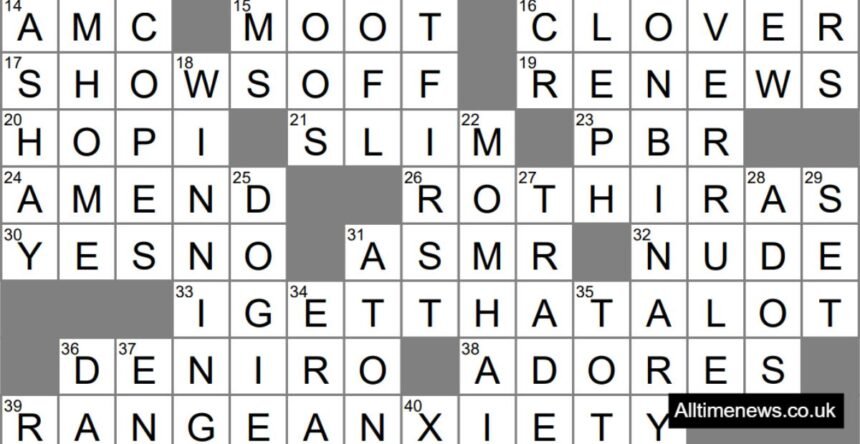Introduction to the New York Times Crossword
The New York Times Crossword is a daily challenge that often incorporates a range of vocabulary and wordplay. Clues can vary from straightforward to complex, each offering a unique puzzle-solving experience. One such intriguing clue that has caught many solvers’ attention is “Occasionally.” The answer refers to a term that signifies something happening from time to time or infrequently.
The Clue: Occasionally
The clue “Occasionally” points to a term used to describe something that happens now and then, rather than regularly or continuously. The answer refers to a word that captures the essence of infrequent occurrence.
Possible Answers
- SOMETIMES: The answer is “sometimes.” This word fits the clue by indicating something that happens on occasion, but not always.
- NOW AND THEN: Another possible answer is “now and then,” which also conveys the idea of occasional or infrequent occurrences.
You may also like
- Claire Who Played Elizabeth II in “The Crown” NYT Clue & Answer
- Foot Part NYT Clue & Answer
- Public Disgrace NYT Clue & Answer
- Ruddy Complexion NYT Clue & Answer
- Bottom Row Keyboard Key NYT Clue & Answer
Joy of Wordplay in Crosswords
Clues like “Occasionally” showcase the subtlety and depth of crossword puzzles. These clues encourage solvers to think about words and their meanings in different contexts, enhancing their puzzle-solving skills. Crosswords provide a satisfying challenge by playing with language, and solving clues that involve frequency or timing adds a layer of enjoyment to the process.
Tips for Solving NYT Crossword Clues
- Consider synonyms: Think of words with similar meanings to the clue.
- Focus on context: The puzzle’s theme can offer hints about the answer.
- Use word associations: Relate the clue to words or phrases that indicate frequency or timing.
Conclusion
The clue “Occasionally” leads to answers like “sometimes” or “now and then,” reflecting terms that describe infrequent occurrences. This clue highlights how crosswords can challenge and entertain by exploring different nuances of language.
